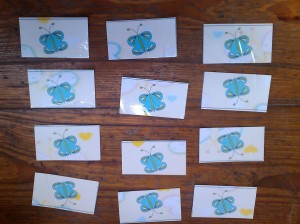This post is rather late. I had it laying in ‘draft’ stage for the longest while and reading it today almost brought a tear to my eye. The children are already gone but here goes.
“I’d rather be jumping around with some noisy children than doing all this paperwork!” This I said to the clerical officer at my school yesterday. The school year is coming to a close and for some reason I had a lot of paperwork to complete. I didn’t know that the paperwork was a blessing in disguise. It kept my mind off of the fact that I was sending these children off to another teacher next year.
It was my first year in the Infant Year One class. I wasn’t sure that I wanted to deal with a bunch of crying five-year-olds entering school for the first time but what a rewarding experience it was! I had a lovely group of children and even the most troublesome one I love and will sorely miss.
She is the girl whose name is known throughout the school. The Principal knows her, the teachers of the upper level classes know her, the cleaners know her. She is the girl whose name is always followed by dramatic sound effects in my head. You remember Darla from “Finding Nemo?” Try it. Say “Darla!” Did you hear the dramatic sound effects? Now that’s my girl. Yet, I miss her when she’s absent and I will miss her when she’s gone on. By the end of the year she’s hugging me and telling me that she wished I was her mom.
Then there’s my ‘popular girl.’ From the very beginning she declared that she wanted to be a popular girl. It took only a little while to realize that she wanted to be a pop singer. She is the girl who wants to sing for you every minute of the day. She is also impulsive and blurts out answers while raising her hand and standing up. She is helpful and respectful, constantly wants to hug you and verbally expresses her love for you. By the end of the year she had a song book with written songs in it.
Then there’s the tiny boy. His shoe size is amazing to look at. They are the tiniest shoes ever and they still fall off his feet when he walks. The uniform is huge on him but it’s the smallest size. He is obsessed with tops and would spin them throughout the day even when he should be working. He is heart broken when the top breaks but always seem to have another soon enough. He is an excellent reader and although he takes all morning to complete one writing exercise, he is right on target. By the end of the year he is patting his friend on the shoulder and telling him not to worry about his (the friend’s) broken top, and that he’ll get another one. Awwww.
Then there’s the shouter who cannot speak softly but is enthusiastic about school and life; the chubby dancer boy who never, ever stops dancing and who never, ever stops laughing; the all round, mature girl who is always neat, polite, well behaved and gets everything right; the quiet, shy boy who now takes part in class; the boy with the bright smile who you can never be upset with no matter what; the boy with the small smile and a mischievous look in his eyes who says the most funny things very softly; the girl who struggles with Reading and is the kindest, most helpful one of all; and all the others.
I will miss these children who made me laugh and made my life so much better for knowing them. I will miss these children who have grown and blossomed and who will continue to do so as they move on. God bless them.
See you next door!

















